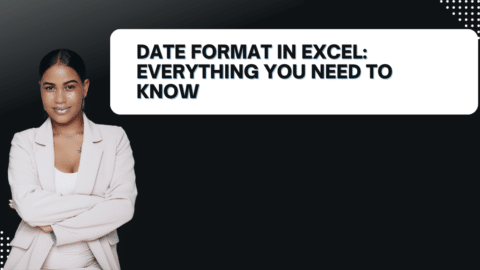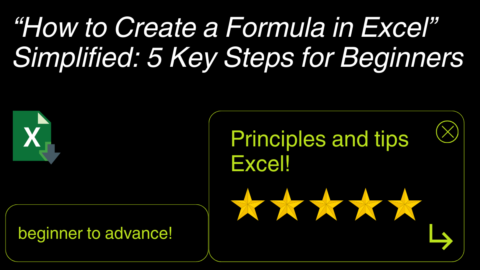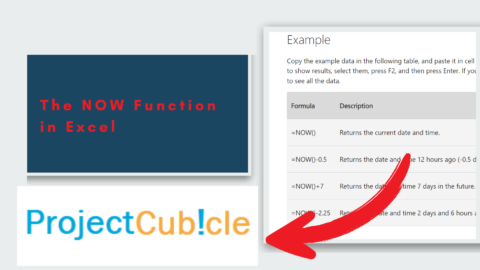Excel Copy Formatting: Mastering the Art of Formatting in Excel
Are you tired of manually formatting your Excel sheets whenever you need to create a new report or analyze data? Do you find yourself struggling to keep your formatting consistent across different worksheets? Look no further because the Excel Copy Formatting Advance Guideline is here to help.
Table of Contents
This guide teaches you how to copy and apply formatting across different cells, worksheets, and even workbooks. You’ll also discover advanced data formatting techniques to make it more readable and visually appealing. Whether you’re a beginner or an experienced Excel user, this guide will take your formatting skills to the next level.
Introduction: Excel Formatting Made Easy
Excel is a powerful tool for managing data, but formatting can be a tedious and time-consuming task. However, proper formatting is essential for making your data easy to read and understand. With the Excel Copy Formatting Advance Guideline, you can streamline your formatting process and create professional-looking reports and presentations in no time.
The Basics of Formatting in Excel
Before we dive into the advanced techniques, let’s review the basics of formatting in Excel. Formatting can refer to many things in Excel, such as font styles and sizes, cell borders, number formatting, and color schemes. Excel provides many pre-defined formatting options, but you can also customize your formatting to suit your needs.
To apply formatting to a cell or range of cells, select the cells and click on the formatting option you want to use. For example, if you want to change the font size, select the cells and then click on the font size drop-down menu in the Home tab.
Excel Copy Formatting Advance Guideline: Copying and Applying Formatting
One of the most useful features in Excel is the ability to copy and apply formatting across different cells, worksheets, and workbooks. This can save you a lot of time and effort, especially when you’re working with large data sets.
To copy formatting from one cell to another, select the cell with the formatting you want to copy and then click on the Format Painter button in the Home tab. Then, select the cell or range of cells you want to apply the formatting to. Excel will automatically apply the formatting to the selected cells.
To copy formatting across multiple cells or worksheets, select the cell or range of cells with the formatting you want to copy, and then double-click on the Format Painter button. This will allow you to copy the formatting to multiple cells or worksheets without having to click on the Format Painter button every time.
Advanced Formatting Techniques
Now that you know how to copy and apply formatting, let’s explore some advanced techniques for formatting your data in Excel. These techniques can help you create more professional-looking reports and presentations.
Conditional Formatting
Conditional formatting allows you to format cells based on certain criteria automatically. For example, you can use conditional formatting to highlight cells that contain a certain value or that fall within a specific range. This can help you quickly identify trends and outliers in your data.
To apply conditional formatting, select the cells you want to format and then click on the Conditional Formatting button in the Home tab. From there, you can choose from a variety of pre-defined formatting options or create your own custom formatting rules.
Custom Number Formats
Excel provides many pre-defined number formats, such as currency and percentage formats. However, you can also create your own custom number formats to display your data in a more readable way.
For example, you might want to display large numbers in thousands or millions instead of the full number. To do this, you can create a custom number format by clicking on the Number Format drop-down menu in the Home tab and selecting Custom. From there, you can enter a custom format code, such as “#,
Using Styles
Styles are a powerful tool for formatting your data consistently across different worksheets and workbooks. A style is a collection of formatting options, such as font size, color, and alignment. By using styles, you can quickly apply consistent formatting to your data without manually formatting each cell or range of cells.
Select the cell or range of cells you want to format to use styles and then click on the Cell Styles button in the Home tab. From there, you can choose from various pre-defined styles or create your own custom styles.
Merging Cells
Merging cells allows you to combine multiple cells into a single cell. This can be useful for creating headers or labels for your data. However, it’s important to use merging sparingly, as it can make your data harder to read and manipulate.
To merge cells, select the cells you want to merge and then click on the Merge & Center button in the Home tab. This will merge the selected cells and center the contents in the new merged cell.
Formatting Tables
Tables are a powerful feature in Excel for organizing and analyzing data. By formatting your tables correctly, you can make your data more readable and easier to understand. For example, you can apply alternate row shading to make it easier to distinguish between rows, or you can apply a banded column style to make it easier to read across columns.
To format a table, select the table and then click on the Table Styles button in the Design tab. From there, you can choose from a variety of pre-defined table styles or create your own custom table style.
Excel Copy Formatting Advance Guideline
Now that you’ve learned some advanced formatting techniques let’s take a closer look at the Excel Copy Formatting Advance Guideline. This guideline provides a step-by-step process for copying and applying formatting across different cells, worksheets, and workbooks.
Step 1: Select the Source Cell
The first step in the Excel Copy Formatting Advance Guideline is to select the source cell. This is the cell with the formatting you want to copy.
Step 2: Click on the Format Painter Button
Next, click on the Format Painter button in the Home tab. This will activate the Format Painter tool.
Step 3: Select the Target Cells
Now, select the cell or range of cells you want to apply the formatting to. Excel will automatically apply the formatting to the selected cells.
Step 4: Double-Click on the Format Painter Button
Double-click the Format Painter button to copy formatting across multiple cells or worksheets. This will allow you to copy the formatting to multiple cells or worksheets without having to click on the Format Painter button every time.
Step 5: Apply Formatting to Multiple Cells or Worksheets
Finally, apply the formatting to the desired cells or worksheets by selecting the cells or worksheets and then double-clicking on the Format Painter button.
FAQ
- What is the Excel Copy Formatting Advance Guideline? The Excel Copy Formatting Advance Guideline is a step-by-step process for copying and applying formatting across different cells, worksheets, and workbooks.
- Can I customize my formatting in Excel? Yes, Excel provides many pre-defined formatting options, but you can also customize your formatting to suit your needs.
- How can I make my data more readable in Excel? You can make your data more readable in Excel by using techniques such as conditional formatting, custom number formats, and styles.
- What is the purpose of merging cells in Excel? Merging cells allows you to combine multiple cells into a single cell. This can be useful for creating headers or labels for your data.
- How can I format my tables in Excel? You can format your tables in Excel using alternate row shading, banded column styles, and table styles.
- Is the Excel Copy Formatting Advance Guideline suitable for beginners? The Excel Copy Formatting Advance Guideline suits beginners and experienced Excel users.
Conclusion: Mastering Excel Formatting
Proper formatting is essential for making your Excel data easy to read and understand. With the Excel Copy Formatting Advance Guideline, you can streamline your formatting process and create professional-looking reports and presentations in no time.
By mastering the basics of formatting and using advanced techniques such as conditional formatting, custom number formats, and styles, you can take your Excel formatting skills to the next level. And with the Excel Copy Formatting Advance Guideline, you can easily copy and apply formatting across different cells, worksheets, and workbooks.
So what are you waiting for? Start using the Excel Copy Formatting Advance Guideline today and take your Excel formatting skills to the next level.
Hello, I’m Cansu, a professional dedicated to creating Excel tutorials, specifically catering to the needs of B2B professionals. With a passion for data analysis and a deep understanding of Microsoft Excel, I have built a reputation for providing comprehensive and user-friendly tutorials that empower businesses to harness the full potential of this powerful software.
I have always been fascinated by the intricate world of numbers and the ability of Excel to transform raw data into meaningful insights. Throughout my career, I have honed my data manipulation, visualization, and automation skills, enabling me to streamline complex processes and drive efficiency in various industries.
As a B2B specialist, I recognize the unique challenges that professionals face when managing and analyzing large volumes of data. With this understanding, I create tutorials tailored to businesses’ specific needs, offering practical solutions to enhance productivity, improve decision-making, and optimize workflows.
My tutorials cover various topics, including advanced formulas and functions, data modeling, pivot tables, macros, and data visualization techniques. I strive to explain complex concepts in a clear and accessible manner, ensuring that even those with limited Excel experience can grasp the concepts and apply them effectively in their work.
In addition to my tutorial work, I actively engage with the Excel community through workshops, webinars, and online forums. I believe in the power of knowledge sharing and collaborative learning, and I am committed to helping professionals unlock their full potential by mastering Excel.
With a strong track record of success and a growing community of satisfied learners, I continue to expand my repertoire of Excel tutorials, keeping up with the latest advancements and features in the software. I aim to empower businesses with the skills and tools they need to thrive in today’s data-driven world.
Suppose you are a B2B professional looking to enhance your Excel skills or a business seeking to improve data management practices. In that case, I invite you to join me on this journey of exploration and mastery. Let’s unlock the true potential of Excel together!
https://www.linkedin.com/in/cansuaydinim/










